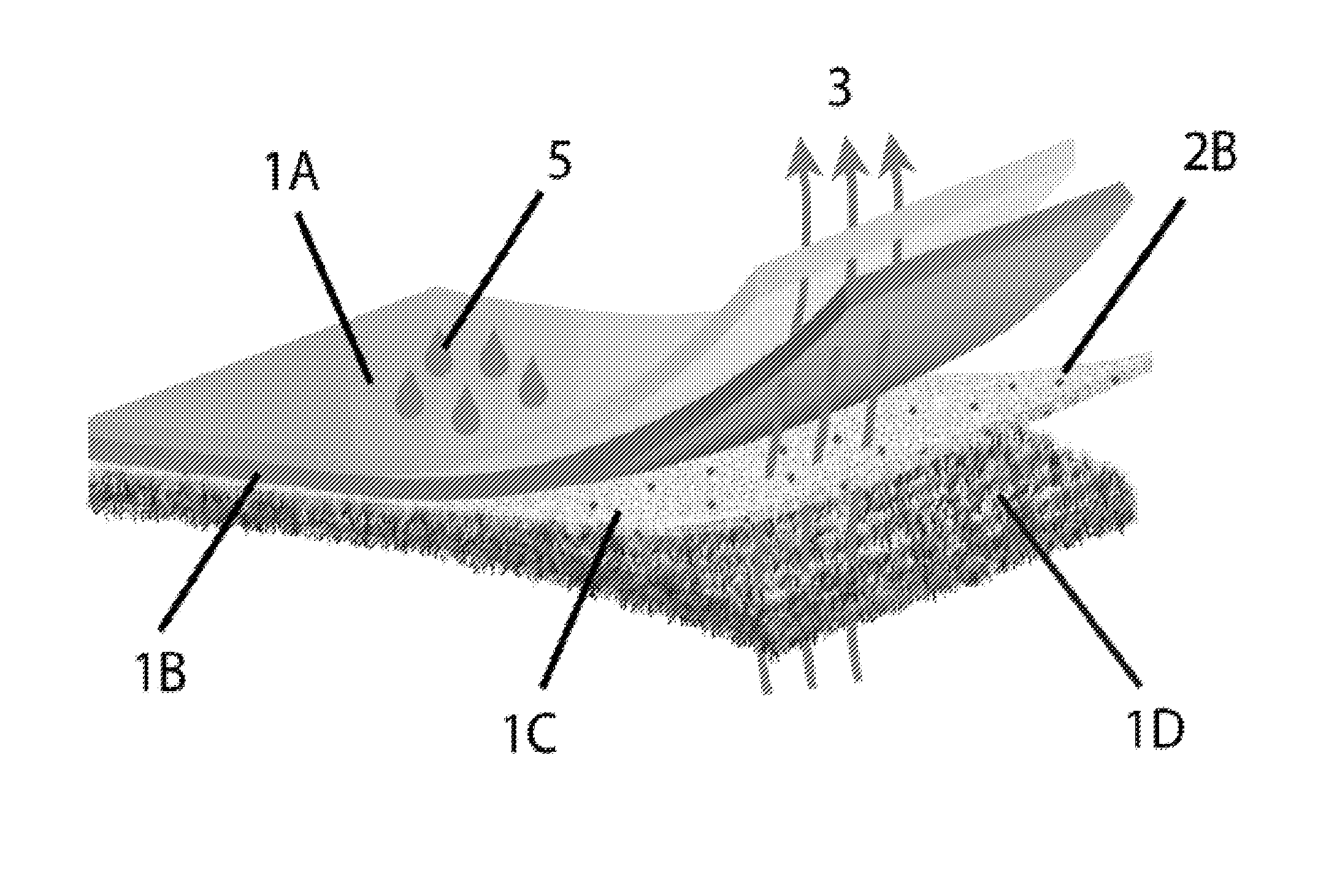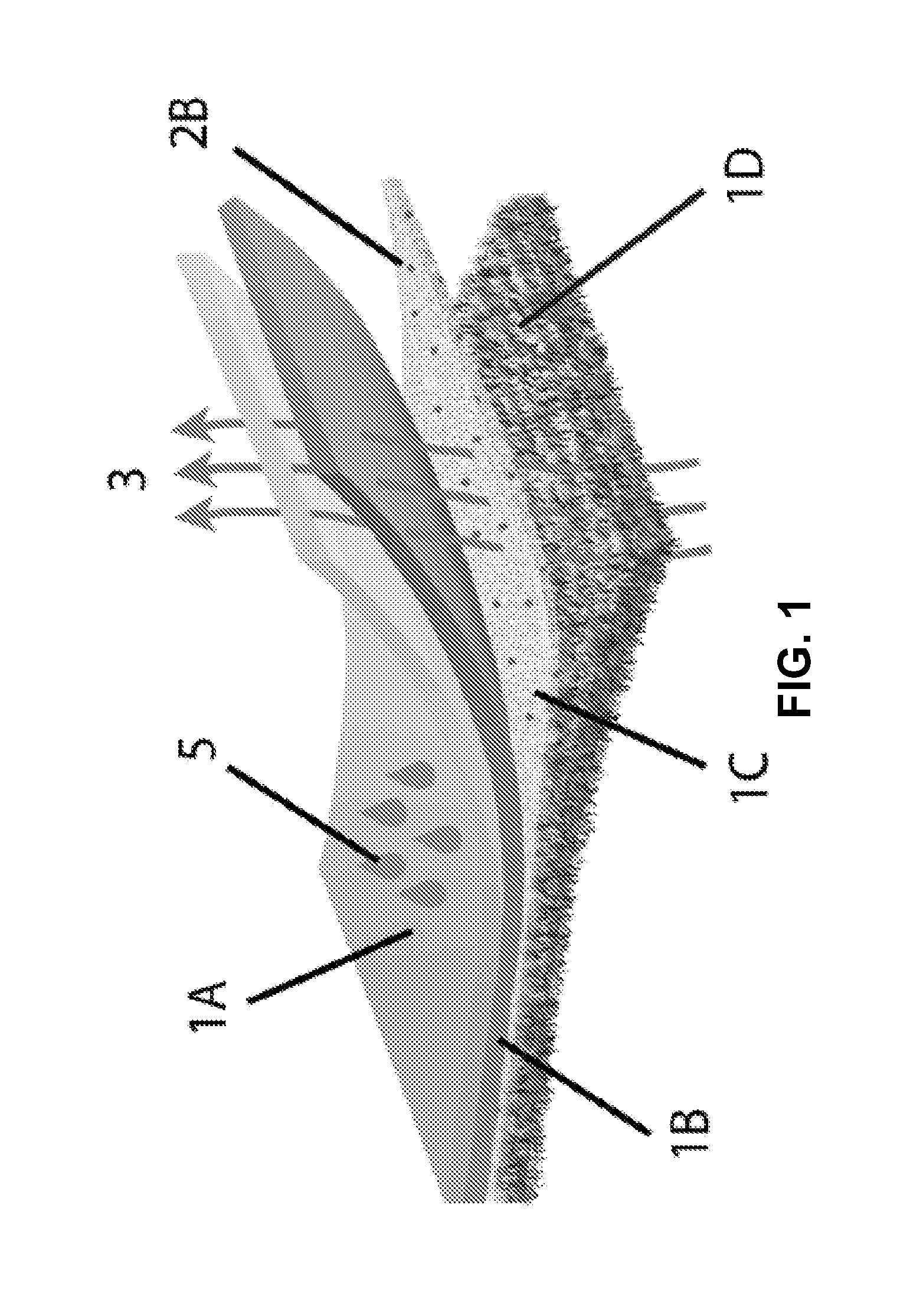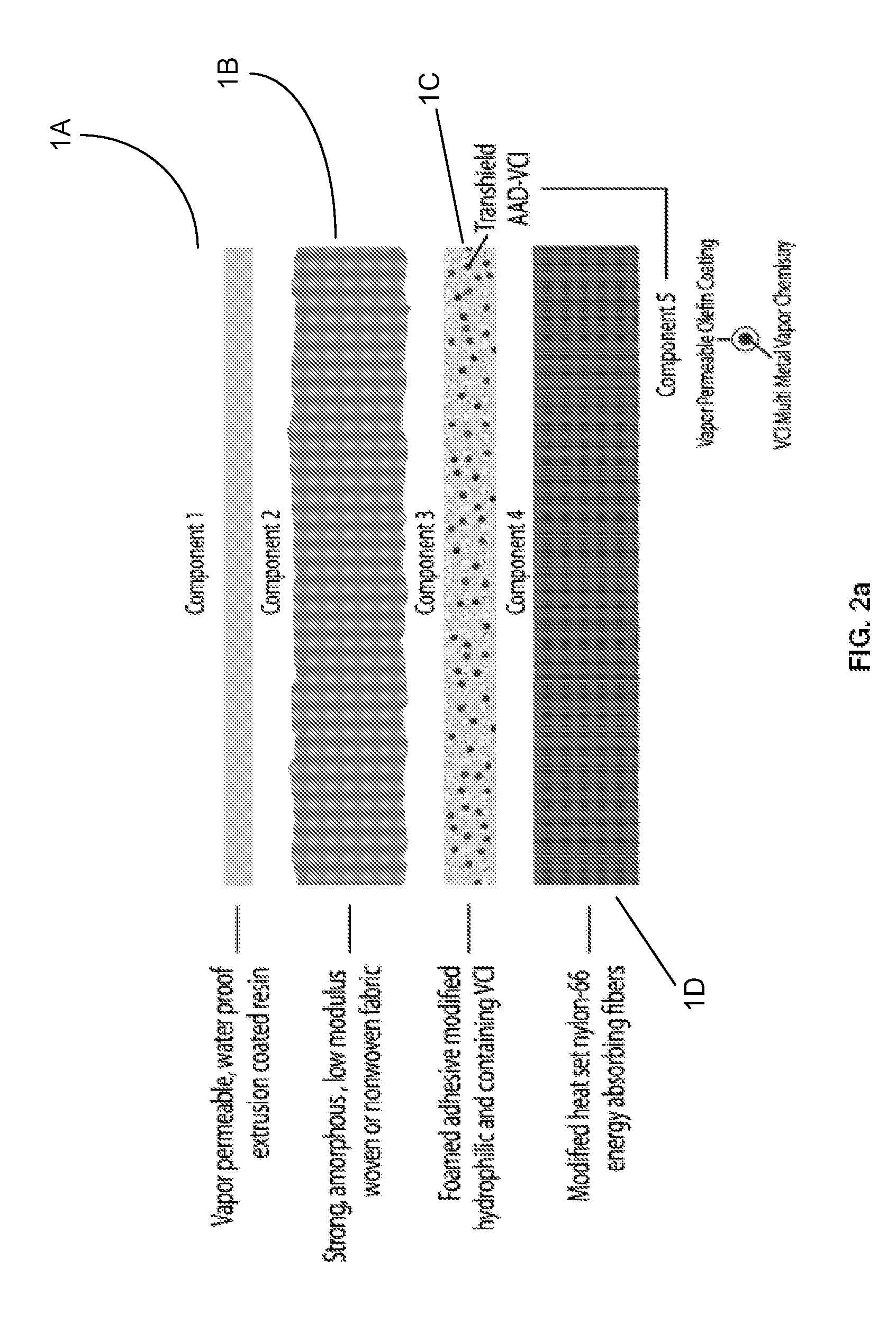Vapor permeable fabric constructs with static or dynamic antimicrobial compositions
a technology of static or dynamic composition and fabric, which is applied in the field of vapor permeable fabric constructs with static or dynamic composition, can solve the problems of not being able to build shelters at all locations, requiring a lot of capital, and spending a tremendous amount of money, time and manpower, etc., and achieves high breathability, high efficiency of use, and soft touch
- Summary
- Abstract
- Description
- Claims
- Application Information
AI Technical Summary
Benefits of technology
Problems solved by technology
Method used
Image
Examples
example 1
Flocking a Porous Fabric
[0260]In a non-limiting example, a fabric construct is prepared as outlined here. The flocking fibers are 1.8 denier round semi-dull nylon 6,6 flock fiber that is 1 mm (39.37 mils) in length. The fiber density upon flocking in an illustrative embodiment is about 61 gsm (1.8 oz / sq yard or 0.1125 lbs / sq yard). The flocking operation as it takes place at Spectro Coating Corporation in Leominster, Mass. starts with a fabric—woven or nonwoven—that is preferably printed on one side. An adhesive pre-coat is then applied to the fabric on the side opposite the print. The adhesive pre-coat most preferably has a blow ratio of 5:1. The pre-coat, FF-3849 by Key Polymer, add on rate most preferably is about 0.5 oz / sq yard (0.0311b / sq yard or 16.95 gsm). Following the application the pre-coat gets dried at 280° F. Upon drying the pre-coating seals the fabric on the applied side and acts as a primer between the fabric and the top coat, FF-3850 by Key Polymer, adhesive. The t...
example 2
[0264]The flocked fabric of Example 1 is extrusion coated by a 3 mil thick mono-layer polymer blend that is made up of, by non limiting example, 50% Elvaloy™ AC 1224, 40% Entira™ Breathe and 10% Fusabond™ FB556 by polymer weight, plus a weathering package as within the ranges given in Table 1 above.
[0265]The extrusion process settings were; melt temperature at 473° F., Chill Roll at 75° F., nip roll at 100 psi, corona treatment at 5 kW and line speed of 75 feet per minute.
example 3
[0266]Application of polyurethane vapor permeable polymer composition. Another example of a fabric construct has a polyurethane vapor permeable coating on two layers of primer adhesive bonded to a polyester porous fabric, where the fabric is further coated with another two layers of adhesive on the opposite side and flocked. The urethane coating formulation is provided in Table 2 above.
[0267]First a Polyester fabric with a twill pattern similar to the one in Example 1 is coated at room temperature by two passes of acrylic primer, FF-3841 supplied by Key Polymer, at a 5:1 foam ratio. About 0.5 oz / sq yard is applied on each pass.
[0268]The primed fabric is then coated with polyurethane, FL-1910 supplied by Key Polymer, at 3.25 oz / sq yard. It is then treated at a temperature of 340° F. The temperature increase from ambient is gradual. If a clear top coat is desired FL-1916 grade could be used.
[0269]If the polyurethane coating is not fully cured at this point, it is ok, because the const...
PUM
| Property | Measurement | Unit |
|---|---|---|
| length | aaaaa | aaaaa |
| length | aaaaa | aaaaa |
| thickness | aaaaa | aaaaa |
Abstract
Description
Claims
Application Information
 Login to View More
Login to View More - R&D
- Intellectual Property
- Life Sciences
- Materials
- Tech Scout
- Unparalleled Data Quality
- Higher Quality Content
- 60% Fewer Hallucinations
Browse by: Latest US Patents, China's latest patents, Technical Efficacy Thesaurus, Application Domain, Technology Topic, Popular Technical Reports.
© 2025 PatSnap. All rights reserved.Legal|Privacy policy|Modern Slavery Act Transparency Statement|Sitemap|About US| Contact US: help@patsnap.com



